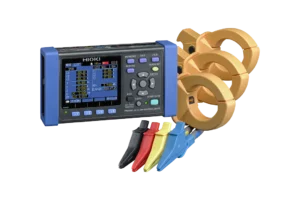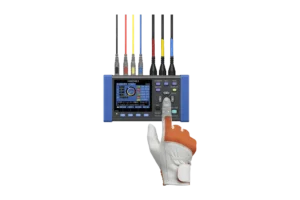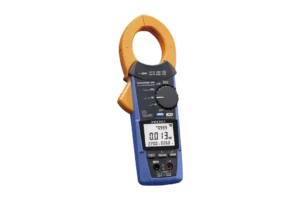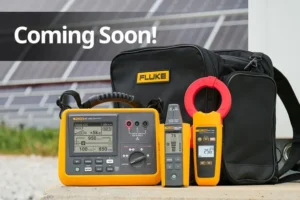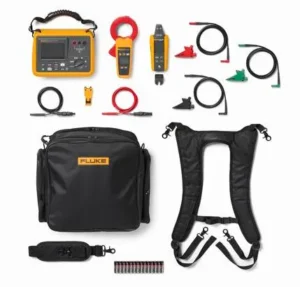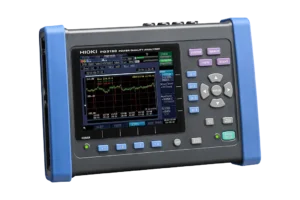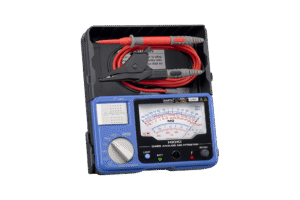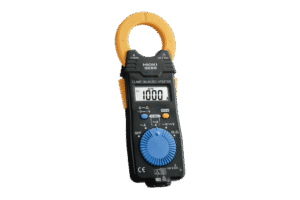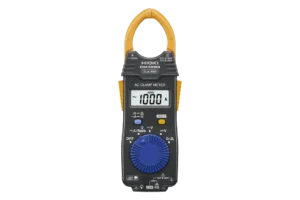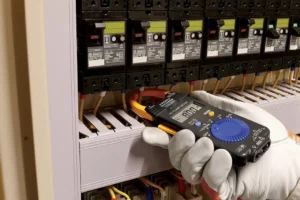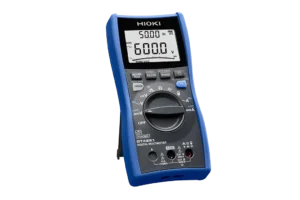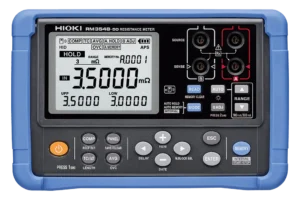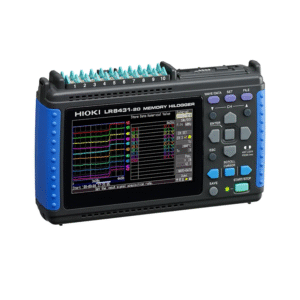The Challenge Every Sparkie Faces
Working safely around live electrical systems demands constant vigilance. Before you open a panel, pull a wire, or commence work on any circuit, you need absolute certainty about what’s energised. Traditional contact testers require you to touch conductors directly – creating unnecessary exposure to potential hazards. In dim switchrooms, roof cavities, or under-floor installations, visibility compounds the safety challenge. You need a testing solution that keeps you safe while providing clear, reliable voltage indication in any lighting condition.
Non-Contact Detection That Protects You
The HIOKI 3481-20 transforms how you approach electrical safety testing. This pen-style voltage detector identifies live AC circuits without requiring any metallic contact with conductors. Simply bring the sensor tip near insulated cables, outlet faces, or panel terminals – the detector senses the electric field and immediately alerts you to the presence of voltage through a bright red LED and audio tone.
The non-metallic sensor design eliminates exposed metal components that could create accidental contact paths. You can verify circuit status through cable insulation, making it ideal for checking cables before cutting, confirming isolation before maintenance, or tracing live conductors through walls and ceilings. The adjustable sensitivity (40V to 80V threshold) lets you fine-tune detection based on cable type and insulation thickness, ensuring reliable indication without false triggers from adjacent circuits.
Built for Real-World Australian Electrical Work
CAT IV 600V Safety Rating Certified for use in the harshest electrical environments, from distribution panels to overhead service mains. This CAT IV rating provides the safety margin required for professional electrical work across commercial, industrial, and utility installations throughout Australia.
Integrated LED Work Light The tip incorporates a white LED that illuminates your testing area – invaluable when working in dimly lit switchrooms, roof spaces, or behind equipment. Check wire colours, read terminal markings, and verify connections without needing a separate torch. The light activates when you power on the detector, keeping one hand free for your work.
Dual Alert System Visual and audible indication ensures you won’t miss voltage detection. The red LED lights prominently at the sensor tip where you’re focused, while the buzzer provides audio confirmation even in noisy environments. This redundant alert system aligns with safe work practices that demand positive confirmation before proceeding.
Pen-Style Portability At just 30 grams and 126mm long, the 3481-20 slips into your shirt pocket alongside screwdrivers and markers. The integrated pocket clip prevents drops while working at height. Keep it within reach at all times – instant access means you’ll actually use it for every verification, not just major isolation procedures.
Smart Power Management The battery check function alerts you to low power before it affects performance – the white LED dims when batteries need replacement. Auto power-off after 3 minutes of inactivity preserves battery life, ensuring the detector is ready when you need it. With 5 hours of continuous use from three LR44 button cells, you’ll get weeks of typical site use between battery changes.
Where This Detector Excels
Commercial & Industrial Maintenance Verify circuit isolation before servicing machinery, lighting circuits, or distribution equipment. Check for backfeed from multiple sources before opening panels. Trace active circuits through conduit runs without de-energising entire systems.
Solar & Renewable Energy Installations Confirm DC-to-AC inverter outputs are isolated before servicing. Verify string voltages through junction box covers. Check for induced voltage on grounded conductors near high-voltage DC arrays.
Residential Electrical Work Identify live circuits at switchboards without removing covers. Verify outlets are de-energised before replacement. Trace cable runs through walls when planning modifications. Check for voltage at light switches before removing fixtures.
Emergency & Fault-Finding Rapidly identify energised circuits during power quality investigations. Locate live sections in partially-failed installations. Verify isolation effectiveness after switching operations.
Compliance & Safety Inspections Confirm equipment isolation as part of pre-work safety procedures. Verify lockout-tagout effectiveness. Document circuit status during safety audits and AS/NZS 3000 compliance verification.



